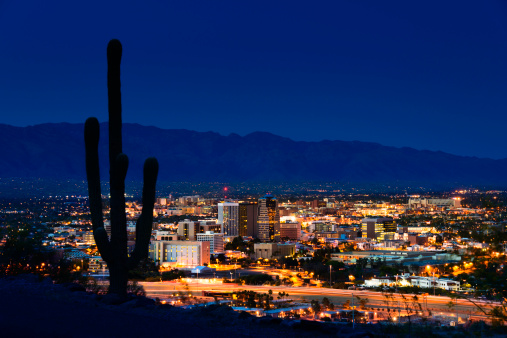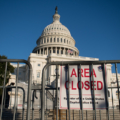Why Tucson Lags Phoenix Economically
It has nothing to do with the local Chamber of Commerce but a lot to do with culture and governance
The Tucson Chamber of Commerce just selected a new CEO. His background is similar to the background of the CEO of the Greater Phoenix Chamber of Commerce. Both have extensive nonprofit and government experience but not corporate or entrepreneurial experience, or international experience, or experience in other regions of the country.
One would think that the Phoenix Chamber is doing a bang-up job compared to the Tucson Chamber, given that Phoenix is a boomtown and a magnet for big business while Tucson seems like an economic backwater by comparison.
To that point, business news in Tucson is often about the opening of a new fast-food restaurant, while business news in Phoenix has such stories as Taiwan Semiconductor building a $12 billion plant in Phoenix, and Intel investing $20 billion in the expansion of its existing semiconductor operations in the Phoenix suburbs of Chandler and Gilbert.
Having lived in both metropolises, my contention is that the economic differences between metro Tucson and metro Phoenix have nothing to do with their respective Chambers but mostly to differences in culture and governance.
With reference to culture, many Tucsonans don’t like metro Phoenix’s size, congestion, fast pace, and hundreds of miles of freeways. Preferring Tucson’s smaller size, laid-back culture, milder climate, and prettier natural setting, they don’t care that metro Phoenix has a more dynamic economy, better opportunities for young people, and better infrastructure and upkeep.
Of course, a metropolis doesn’t have to be the size of metro Phoenix to be prosperous.
At the same time, some Tucsonans are frustrated with metro Tucson’s crumbling roads, unkempt property, and low income. They lament that the City of Tucson has a poverty rate twice the national average, as well as what comes with poverty: human misery, crime, and poor K-12 test scores. They sense that something is amiss with local government but can’t put their finger on it.
They’re right that something is amiss. What’s amiss is that metro Tucson doesn’t have the political diversity, municipal diversity, and government coordination and planning of metro Phoenix. Let’s look at specifics.
In all, metro Phoenix consists of 27 incorporated cities and towns and four Native American communities. Some are predominately Democrat, some are predominately Republican, and some, like Scottsdale, have nonpartisan elections. Several are large cities in their own right, with their own character, amenities, and town centers.
The table below shows the top seven municipalities, by population, in metro Phoenix.
| Top Municipalities
Metro Phoenix |
Population |
| Tempe | 195,805 |
| Glendale | 257,233 |
| Gilbert | 266,714 |
| Scottsdale | 268,839 |
| Chandler | 269,123 |
| Mesa | 538,146 |
| Phoenix | 1,759,943 |
This diversity brings about economic competition but a competition that is tempered by the Maricopa Association of Governments, which was formed in 1967 to enable the 31 different jurisdictions, as well as the county, to cooperate on transportation planning and other issues affecting the quality of life of the entire metropolis.
By contrast, nearly 90% of the population of metro Tucson is in only two jurisdictions: the City of Tucson and unincorporated Pima County, both of which have been controlled by one party, the Democrat Party, for decades. Also, the metropolis is still struggling to fund a metro-wide planning and coordinating agency as effective as the Maricopa Association of Governments, which has been operating effectively for 55 years, albeit with a few boondoggles, as all government agencies are prone to do.
The table below shows the top jurisdictions, by population, in metro Tucson.
| Top Jurisdictions
Metro Tucson |
Population |
| Oro Valley | 48,231 |
| Marana | 51,908 |
| Unincorporated
County |
381,600 |
| Tucson | 554,503 |
Not only does metro Tucson have less municipal and political diversity, but it is hampered by so much of the metropolis is an unincorporated county. Even if the county were well-run, it could not provide the level of services of a well-run municipality. That’s because an unincorporated county is better suited for rural areas than urban ones.
To that point, consider the Foothills. It is the wealthiest part of the Tucson metropolis, with a median household income of approximately $90,000, which is about the same as the median household income in the Phoenix suburb of Scottsdale. But being in the unincorporated county, the Foothills does not have the amenities, upkeep, and services of Scottsdale. For example, within its roughly 30 square miles, there is not one public park, one civic center, or one ball field or sports court, except for sports facilities at public schools.
The bottom line is that monopolies have little incentive to improve.
The Tucson metropolis doesn’t have to be as big as the Phoenix metropolis to be more prosperous, to have better opportunities, to have more amenities, and to be better maintained. It just needs political diversity, the incorporation of the county, and an effective metro-wide planning and coordinating agency.
Of course, those who control the monopoly and benefit from it will claim that this can’t be done. For sure, the head of the Tucson Chamber isn’t going to try to overturn the political and governmental status quo.
*****
Mr. Cantoni is an author, activist, and former management consultant and executive with leading international and domestic corporations.



